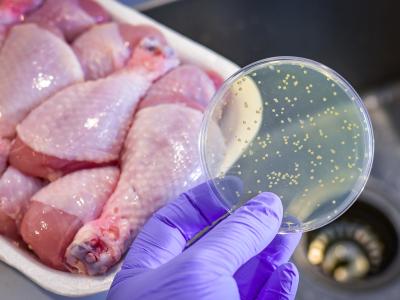Mar 20, 2012
Avian flu on Dutch turkey farm was H5N2
The low-pathogenicity avian flu virus found on a Dutch turkey farm was an H5N2 strain, Dutch officials said in a report to the World Organization for Animal Health (OIE), not H7 as mentioned in a press report yesterday. The virus infected 200 turkeys but caused no deaths, and it prompted the culling of all 44,500 turkeys on the farm, according to the OIE report. Because low-pathogenicity H5 and H7 avian flu viruses can mutate into highly pathogenetic forms, they must be reported under European regulations. The source of the virus was listed as unknown. All commercial poultry in a 3-kilometer zone around the affected farm will be screened, the report said.
Mar 19 Dutch report to OIE
Taiwan confirms latest outbreak of high-path H5N2
Taiwan (Chinese Taipei) has confirmed its third outbreak of highly pathogenic H5N2 avian flu in commercial poultry in as many weeks, according to a report yesterday to the OIE. The three outbreaks combined have killed 1,548 birds and led to the culling of 21,564 others to prevent disease spread. All began last month but were reported to the OIE after delays of varying lengths. The most recent report describes an outbreak in a flock of 8,647 poultry that killed 426 birds in Chu-Tang township of Changhua County. A Mar 10 report detailed 318 deaths in a flock of 9,625 in Fang-Yuan township in the same county, and a Mar 3 report confirmed 804 H5N2 deaths in a flock of 4,804 birds in Liou-Jia district of Tainan county. All remaining birds in the three flocks were culled. In January Taiwan reported to the OIE that a November 2011 avian flu outbreak killed 200 birds on a commercial farm in Fang-Yuan, and the remaining 52,800 poultry were culled. That outbreak, however, was attributed to low-pathogenic H5N2, even though all infected birds died. The H5N2 outbreaks have led to charges of a government cover-up, according to a Mar 14 Taipei Times article.
Mar 19 OIE report
Mar 10 OIE report
Mar 3 OIE report
Jan 10 OIE report
Mar 14 Taipei Times story
Adolescent flu-shot coverage reported higher by parents than by providers
Parents of adolescents report their children as having had an influenza vaccination at a rate about 10 percentage points higher than providers do, says a study today in Vaccine. The researchers analyzed data from the 2009 National Immunization Survey–Teen (NIS-Teen), a two-phase survey that estimates vaccination status by interviewing by phone parents in randomly selected households of 13- to 17-year-olds and then following up with a mail survey to the adolescents' providers. Based on parent reports, influenza vaccination coverage was 21.7%, compared with 11.3% based on providers' reports. The overall sensitivity of parental report of vaccination was 86.7%, specificity 86.2%, positive predictive value (PPV) 43.1%, and negative predictive value 98.0%, using the provider report as the "gold standard." Among the parents surveyed, 22% retrieved and referred to a "shot card" when giving their answers. When these parents reported a vaccination that a provider did not report (hence thought to have been obtained at other than the physician's office), those vaccinations were considered "true" by the researchers, and the sensitivity, specificity, and PPV increased to 91%, 93%, and 71%, respectively. The authors say that coverage estimates in the adolescent population are important for planning following the change by the Center for Disease Control and Prevention's Advisory Committee on Immunization Practices to expand annual flu shot coverage to include youngsters up to 18 years of age.
Mar 20 Vaccine abstract




















